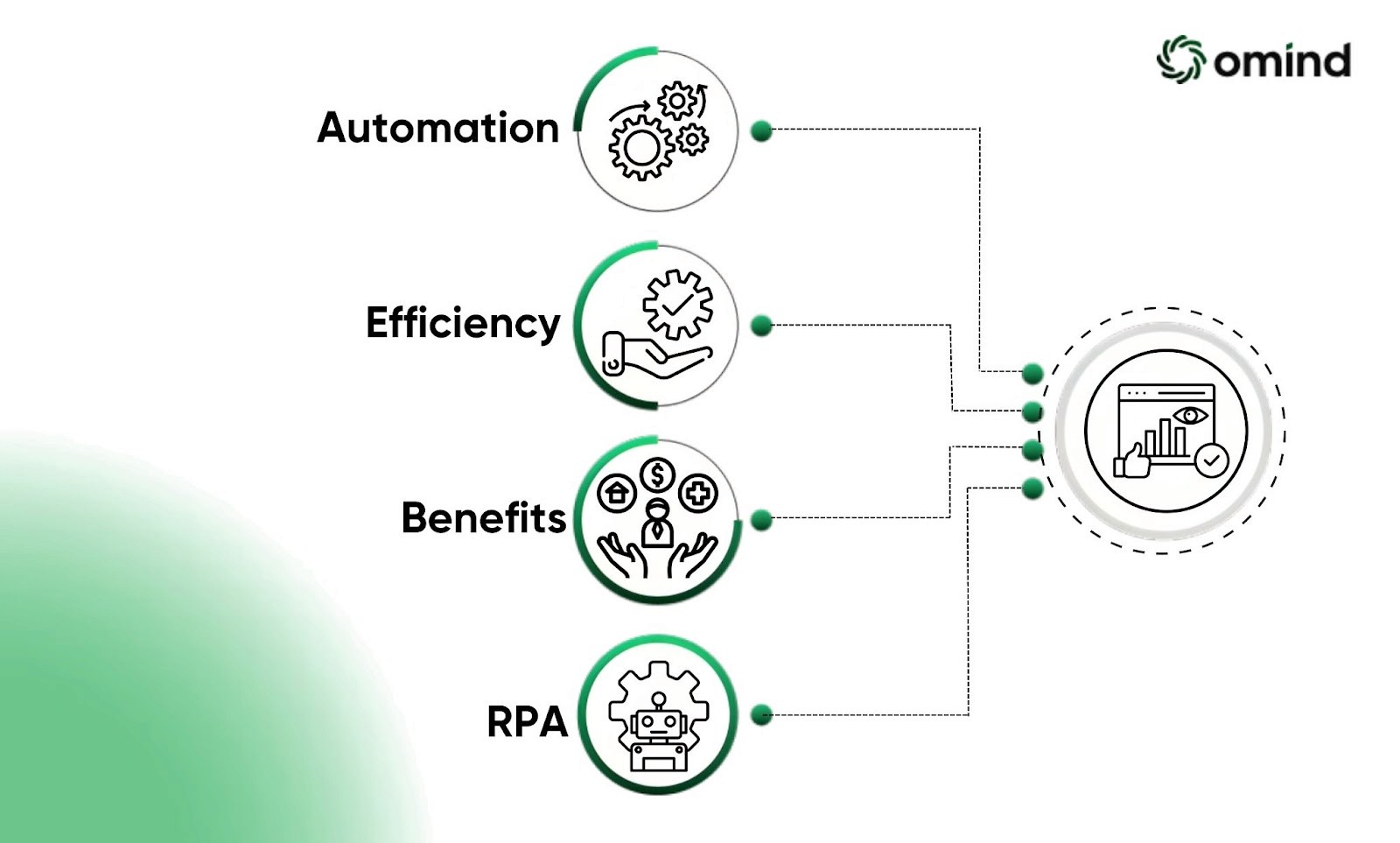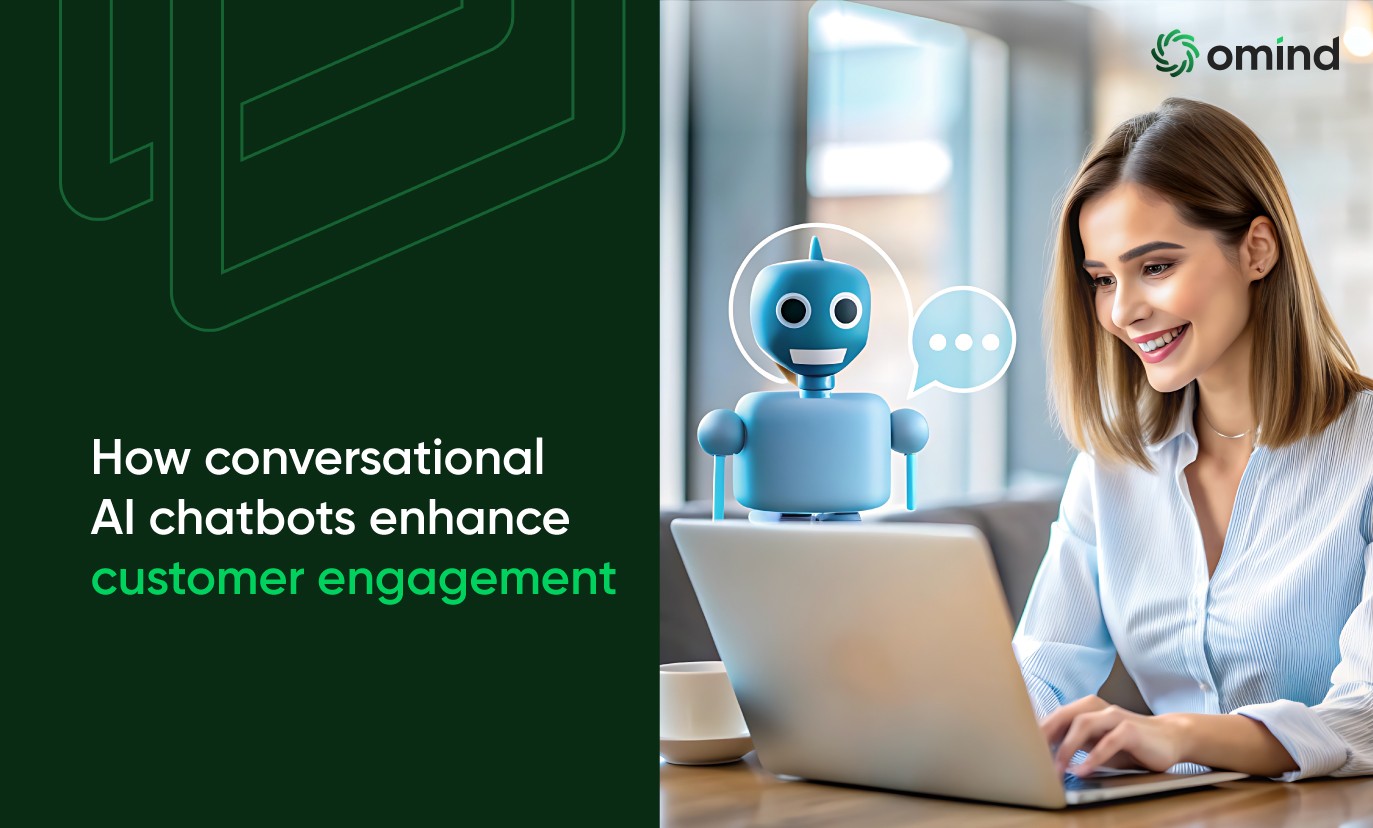Robotic Process Automation (RPA) has become a game-changer in many fields, changing how companies do things they do repeatedly. RPA is a software tool called "bots" that automatically performs tedious, rule-based tasks. This frees up people to work on more critical projects.
Imagine that entering data or making reports will be easy with RPA. That shows how powerful RPA is. It works with software programs like a person would. It moves through interfaces, takes in data, does math, and sends out results—all without getting tired and with a significantly reduced margin for error compared to manual processes. This virtual workforce is particularly adept at tackling high-volume business processes, from finance and HR to customer service and IT support.
As businesses try to stay competitive, RPA can unlock various benefits. It improves productivity and flexibility to enhance customer experiences and cost savings. When you make your clients feel valued, they return to you for more. This not only retains them, but they also become your brand ambassadors and drive more customers. Are you considering integrating AI with automation? Omind's platform can elevate this transition, creating more intelligent automation solutions that cater to your business needs.
Now that you're hooked on RPA's promise. See how this tech operates in the following sections.
How Does RPA Work?
Examining the workings of robotic process automation (RPA), you will find many fascinating links. Automation connects technology and software systems that resemble human interaction. It mimics human user actions, passing through digital interfaces and accurately carrying out tasks.
The foundation of RPA capability is the development and administration of software bots. They are like virtual assistants created to carry out various jobs throughout a variety of corporate procedures. These bots boost human capabilities with exceptional efficiency, integrating into existing workflows from data entry and validation and system integration.
This unique process enhances its ability to use cutting-edge technology like machine learning (ML) and artificial intelligence (AI). These bots adjust, increase performance over time, and change business requirements through AI-driven decision-making and ML-powered learning.
Omind uses the same cutting-edge tech to automate and improve customer journeys. It shows how generative AI can further refine and add to RPA solutions. Furthermore, process and task-mining techniques are frequently used to create RPA solutions. By analyzing historical data and user interactions, organizations can uncover potential for automation and gain valuable insights.
With the nuts and bolts of RPA clear, it's time to explore the different flavors this technology offers—trust me, it's more varied than your morning coffee options.
Types of Robotic Process Automation (RPA)

While exploring, you understand there are diverse automation types tailored to specific business needs. There are three categories: Attended Automation, Unattended Automation, and the innovative Hybrid RPA.
Automation is famous for the cooperation between human workers and RPA bots. In this scenario, bots work with employees, assisting them in real-time with tasks that need human intervention. This dynamic combination enhances output and efficiency, empowering workers to focus on vital tasks while offloading repetitive tasks to the bots.
On the other hand, Unattended Automation works autonomously, with bots executing predefined tasks without human guidance. These bots work in the background, handling batch processing, scheduled tasks, and large-scale data operations with minimal involvement. Unattended Automation is well-suited for scenarios where 24/7 operations are crucial. With this, companies can assist their clients even after working hours.
Hybrid RPA combines the approaches above, allowing it to adapt to different automation needs. Combining parts of attended and unattended automation, Hybrid RPA smoothly transitions between human-led and bot-driven activities. This process optimizes resource use and workflow efficiency.
The functionalities of Hybrid RPA extend beyond simple task execution, covering a variety of capabilities. It improves collaboration, decision-making, and scalability of your customer experience and other tasks. You can achieve automation maturity from workload balancing to adaptive process and cognitive automation while keeping human-centric workflows.
That's pretty nifty, right? But hold on—it gets even better. Let's check out the amazing perks RPA offers.
Benefits of Robotic Process Automation (RPA)
Exploring the benefits of RPA reveals many advantages that help with various organizational operations. So, let's examine some points now.
Among these benefits, automating repetitive tasks increases efficiency and accuracy. By relieving employees of manual, repetitive activities, RPA allows them to focus on complex jobs requiring human involvement. This saves time, minimizes errors, and improves operational efficiency and customer satisfaction. Likewise, Omind's solution focuses on enhancing customer experiences. It does this by addressing pain points with smart automation. This ensures your company gets these same benefits in all customer interactions.
Moreover, it plays a significant role in improving customer service and ensuring compliance with regulatory standards. By streamlining processes, RPA helps organizations offer consistent, high-quality services while mitigating the risk of errors. This can enhance the customer experience and build stakeholder trust and loyalty.
In addition to operational excellence, robotic process automation reduces cost and improves productivity. By automating processes, organizations can reduce operational costs and enhance the use of human capital. This leads to profit, faster time to market, and a competitive edge in the marketplace.
Furthermore, automation allows organizations to handle workloads with ease and efficiency. Whether scaling up to meet growing demand or optimizing resources, RPA provides the flexibility and agility to adapt to changing businesses. This scalability, coupled with the rapid return on investment (ROI) offered by RPA implementations, makes it a compelling choice for companies seeking sustainable growth.
RPA sounds no-brainer, but where's it making the biggest splash? Let's snoop around various industries to snag some insider info.
Applications and Industry Adoption of RPA

Exploring RPA reveals an exciting landscape where automation drives efficiency, innovation, and growth across diverse sectors. From finance and HR to customer service and supply chain management, this reshapes how organizations work and compete in today's digital age.
The adoption of RPA is widespread among industries now. It fits organizations of all sizes, streamlines processes, reduces costs and enhances agility. Key sectors embracing RPA include finance, where bots automate invoice processing and regulatory reporting, leading to faster transaction processing and better compliance.
Automation is revolutionizing talent acquisition, onboarding, and employee management processes. It frees HR professionals from administrative burdens and allows them to focus on talent development and workforce planning.
Customer service is another area where RPA is making significant advances. Bots handle routine inquiries, ticket routing, and data retrieval. They boost service quality and drive customer happiness.
Supply chain management is another area where this technology is shining. Here, bots automate order, inventory management, and logistics coordination, leading to greater efficiency and cost savings throughout the supply chain.
Several factors come into play when assessing processes for RPA compatibility. These include the volume and frequency of tasks, the amount of rule-based decision-making, and more. Automation also helps with cost savings and productivity gains. Legal compliance and data security are crucial considerations while implementing this automation.
Clear about application and adoption? Let us now discuss the challenges and considerations.
Challenges and Considerations in Adopting RPA
Adopting RPA may include issues and factors businesses must handle to guarantee a smooth implementation. Overcoming challenges needs a comprehensive strategy that addresses everything from beginning to end.
Flexibility is the first problem you face while implementing this automation technology. Even if RPA excels at automating rule-based, repetitive jobs, its scalability may be limited by system compatibility and human decision-making requirements. Companies that want to manage complex processes and workflows must assess RPA solutions' scalability before embracing them.
Adoption of this also involves significant security and privacy issues. Organizations automate sensitive data handling procedures, so data security, regulatory compliance, and cyber threat protection become critical. For this reason, you need to implement strong security measures, such as access controls, data encryption, and routine security audits, to mitigate risk.
Furthermore, robotic process automation requires a mentality and cultural change inside the company. Staff involvement is necessary for the success of this automation. Communicate advantages and offer training and help for more clarity.
Companies must also invest in new quality assurance standards to guarantee the accuracy, performance, and dependability of RPA implementations. This entails building robust testing frameworks and implementing feedback systems to improve RPA processes. Partnering with an experienced platform like Omind can ease this transition, providing the expertise and support needed to navigate these challenges effectively.
Have you navigated the RPA maze of challenges? That's cool. Now, let's compare it to its techie cousins, AI, and others, and see who wins the race.
RPA vs AI and Other Technologies

Comparing RPA with AI and other technologies reveals differences between these technologies. Let us explore them now.
RPA focuses on automating tasks and repetitive jobs by mimicking human actions within digital systems. Unlike AI, RPA works within predefined rules and workflows, making it well-suited for tasks that follow transparent, structured processes. In contrast, AI uses algorithms and data to analyze complex patterns and make predictions. It also adapts to evolving scenarios, offering greater flexibility for handling unstructured data and dynamic environments.
RPA offers several unique advantages over traditional workflow automation tools and BPM software. Traditional automation tools require coding and customization. RPA platforms have simple user interfaces and visual programming. They help business users design, deploy, and manage automation processes with minimal IT involvement.
Moreover, RPA integrates with AI technologies to improve its processing capabilities. By leveraging AI-driven algorithms, RPA bots can analyze unstructured data, extract insights, and make informed choices in real time. This integration allows you to automate complex tasks that require human-like reasoning and judgment, such as document processing, sentiment analysis, and fraud detection.
Implementation and Scaling of RPA
The RPA process must be strategically planned, executed, and optimized to achieve its full potential. See how you can do that.
Steps for RPA Implementation
Build Phase: Building, operating, and managing are the three steps in implementing RPA. During the build phase, organizations construct or configure bots to carry out certain activities, design RPA workflows, and discover and rank automation opportunities. This involves working with stakeholders, assessing procedures, and establishing precise goals and success standards.
Operation Phase: During the operation phase, companies integrate RPA bots into live environments, track their functionality, and handle mistakes and exceptions. To ensure compliance and security, you need clear rules and defined roles. Establishing governance procedures is also vital. Train and assist end users to make the integration into regular operations go more smoothly.
Orchestrate: Ultimately, companies grow RPA implementations to automate enterprise-wide during the Setup phase. This involves identifying ways to optimize and standardize processes and fusing RPA with other technologies and systems. Continuous assessment and refining are unavoidable in making automation workflows. By utilizing analytics and performance indicators, firms can discover blocks in workflows, optimize procedures, and stimulate ongoing enhancement and novelty.
Scaling RPA requires careful planning and coordination to align with business goals and scalability requirements. Organizations must also invest in training, resources, and infrastructure to meet the increasing need for automation skills and guarantee long-term success.
Firms must assess several options while choosing RPA software to guarantee compatibility, functionality, and user-friendliness. These include analyzing the vendor's track record and standing, support services, deployment options, and licensing fees. You should also conduct exhaustive proof-of-concept and pilot tests to confirm the software is appropriate for your needs.
Are you all set on the present? Fasten your seatbelts—we're about to leap into the future of RPA, and it's looking brighter than ever!
Future Trends in RPA
Peeking at future RPA trends shows us tech reshaping the market and changing workflows. What will the future of robotic process automation (RPA) be? Read the following section to learn more.
Hyperautomation is a comprehensive approach to automation that blends RPA with AI, machine learning, and other cutting-edge technology. By combining RPA with cognitive capabilities, you may automate end-to-end business processes, applications, and departments. Hyperautomation has the potential to completely transform how businesses run by fostering large-scale creativity, agility, and efficiency.
Similarly, the next frontier in automation is a new one called RPAAI, or Robotic Process Automation with Artificial Intelligence. Using AI-driven algorithms for natural language processing and predictive analytics, RPAAI goes beyond typical RPA. This enables businesses to automate complex processes like fraud detection and risk assessment like human beings.
Future growth and evolution of the RPA market are anticipated due to several factors, including the growing need for automation and changing client demands. The development of industry-specific automation platforms, the spread of cloud-based RPA solutions, and the convergence of RPA with augmented reality, blockchain, and the Internet of Things are significant trends influencing the RPA market in the future.
In conclusion, RPA's future shines. It is ready to be a key part of automation, boosting productivity, sparking creativity, and upping competitiveness. With this, business users can easily create, implement, and manage automation workflows. The future leans towards hyper-automation. Omind's generative AI platform is ready to merge with your RPA strategies. It will keep your business at the forefront of innovation and efficiency.
Feeling jazzed about RPA's future? Perfect! Let's round up with some final food for thought before you dash off to automate the world.
A Final Thought
As this technology evolves, businesses can gain more advantages with RPA. The future of Robotic Process Automation (RPA) trends is set to revolutionize business operations. The idea of hyper-automation, integrating RPA with AI, promises easy handling of tasks. RPAAI, the fusion of RPA with advanced AI capabilities, allows organizations to tackle complex tasks with human-like reasoning. Embrace these trends with experts like Omind and empower your company to drive innovation and enhance competitiveness. Schedule a demo with us for more details.
AUTHOR
Team Omind
Empowering Businesses with Unified Customer Experience Platform, Leveraging Advanced AI and Intelligent Automation
PRODUCT
Intelligent Automation
Share LINK
Related Blogs







